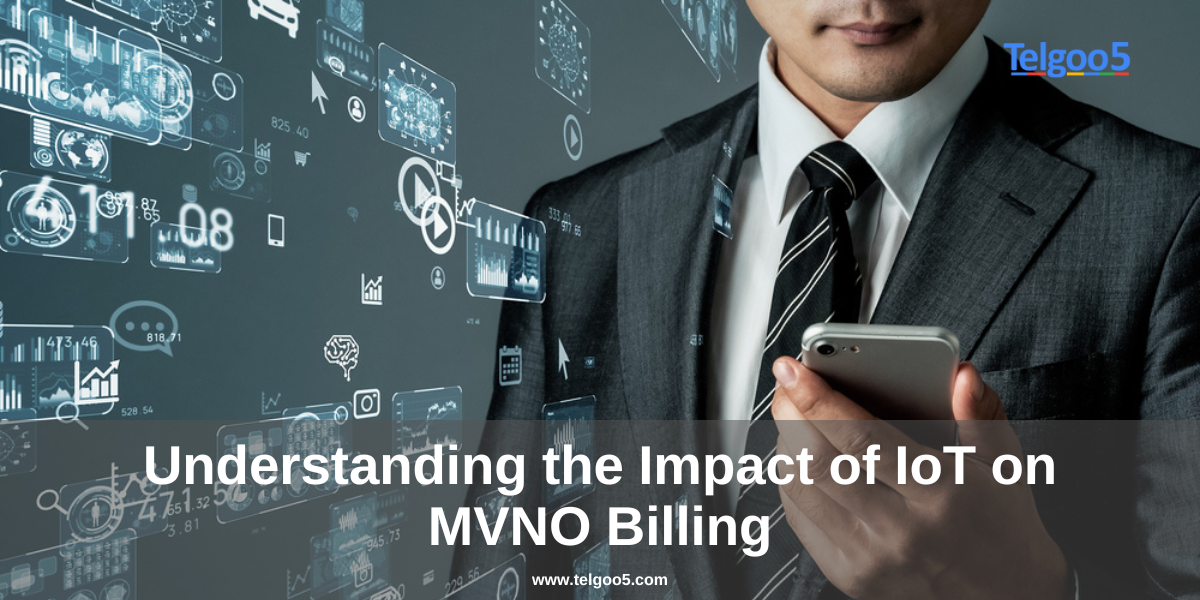
Understanding the Impact of IoT on MVNO Billing
The Internet of Things (IoT) is a rapidly growing market that has the potential to transform the way we live and work. IoT devices are becoming more prevalent in our homes, businesses, and cities, generating vast amounts of data. This data must be collected, processed, and analyzed, which presents a significant challenge for Mobile Virtual Network Operators (MVNOs) who must bill for IoT services. In this blog post, we will explore the impact of IoT on MVNO billing and how MVNOs can meet the challenges of billing for IoT services.
What is IoT?
IoT refers to the network of physical devices, vehicles, home appliances, and other items embedded with sensors, software, and connectivity, allowing them to connect and exchange data. IoT devices can range from simple sensors that detect temperature or humidity to complex systems that manage entire factories or cities.
IoT devices generate vast amounts of data, which can be used to improve efficiency, optimize processes, and create new business models. However, this data needs to be collected, processed, and analyzed, which presents a significant challenge for MVNOs who need to bill for IoT services.
Impact of IoT on MVNO billing
IoT presents several challenges for MVNO billing. Here are some of the ways that IoT is impacting MVNO billing:
Data Volume
One of the biggest challenges of billing for IoT services is the volume of data generated by IoT devices. IoT devices can generate vast amounts of data that need to be collected, processed, and analyzed. This presents a significant challenge for MVNOs, who need to bill for IoT services.
MVNOs need the infrastructure to collect, store, and process large volumes of data. They also need the technology to analyze this data and bill for the services provided.
Data Variety
Another challenge of billing for IoT services is the variety of data generated by IoT devices. IoT devices can generate data in various formats, including text, images, video, and audio. This data needs to be processed and analyzed in different ways, which can be complex and time-consuming.
MVNOs need technology to process and analyze different types of data. This can include machine learning algorithms and artificial intelligence tools that help automate the analysis and billing processes.
Data Velocity
Another challenge for MVNO billing is the speed at which data is generated by IoT devices. IoT devices can generate data in real time or near real time, which requires MVNOs to have the infrastructure in place to collect and process data quickly.
MVNOs need to have the technology in place to handle real-time data processing and billing. This can include edge computing technologies that can perform data processing at the network’s edge, closer to the IoT devices.
Service Level Agreements (SLAs)
SLAs are agreements between MVNOs and their customers that define the level of service that will be provided. SLAs can include metrics such as uptime, latency, and data accuracy. SLAs are critical for ensuring that customers receive the level of service they expect and for providing the basis for billing.
IoT devices can present additional challenges for SLAs. For example, some IoT devices may require high reliability and uptime, while others may be more flexible. MVNOs need to have the technology and processes in place to manage SLAs for IoT services.
Billing Models
Billing models for IoT services can be complex and may require customized solutions. For example, some IoT devices may require a pay-as-you-go model, while others may require a subscription model. MVNOs need to be flexible enough to offer different billing models for different IoT services.
MVNOs also need the technology in place to handle complex billing arrangements. This can include billing for different types of data, such as text, images, and video, and different data rates.
Meeting the Challenges of IoT Billing
Meeting the challenges of billing for IoT services requires MVNOs to have the right technology in place. Here are some of the technologies that MVNOs can use to meet the challenges of IoT billing:
Big Data Analytics
Big data analytics can help MVNOs collect, process, and analyze large volumes of data generated by IoT devices. It can also help MVNOs identify patterns and trends in the data, which can be used to optimize processes and create new business models.
Artificial Intelligence
Artificial intelligence (AI) can automate the analysis and billing processes for IoT services. AI tools can help MVNOs identify anomalies in the data and predict future trends.
Edge Computing
Edge computing can perform data processing at the network’s edge, closer to the IoT devices. This can help reduce latency and improve the speed of data processing.
Blockchain
Blockchain can be used to store and securely manage data generated by IoT devices. Blockchain can help to ensure the integrity and security of the data, which is critical for billing IoT services.
Customized Billing Solutions
MVNOs may need to develop customized billing solutions for different IoT services. These solutions can include pay-as-you-go, subscription, and tiered pricing models. MVNOs also need the technology in place to handle complex billing arrangements.
Conclusion:-
In conclusion, IoT is transforming how we live and work, presenting significant challenges for MVNO billing. MVNOs need the infrastructure, technology, and processes to handle the volume, variety, and velocity of data generated by IoT devices. They also need the flexibility to offer different billing models for different IoT services. By leveraging technologies such as big data analytics, AI, edge computing, and blockchain, MVNOs can meet the challenges of billing for IoT services and provide their customers with the level of service they expect.
Contact us today to get a consultation!
Send us a message to get answers to any of your questions & we'll get back to you within 24-48 hours or as soon as possible.
